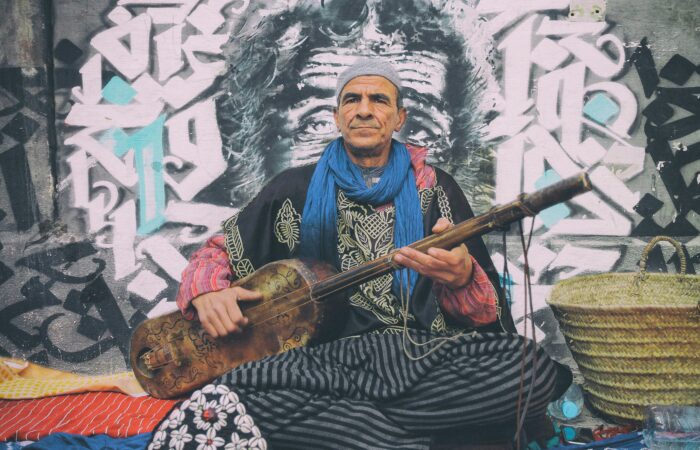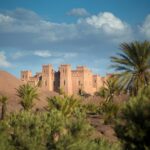Introduction
Camels, often referred to as the “ships of the desert,” have played an essential role in the history and culture of Morocco. These remarkable animals have been indispensable for transportation across the vast and challenging terrains of the country, particularly in the arid regions. Understanding the historical significance of camel transportation in Morocco offers insight into the resilience and adaptability of Moroccan society.
Table of Contents
The Geography and Climate of Morocco 🌍
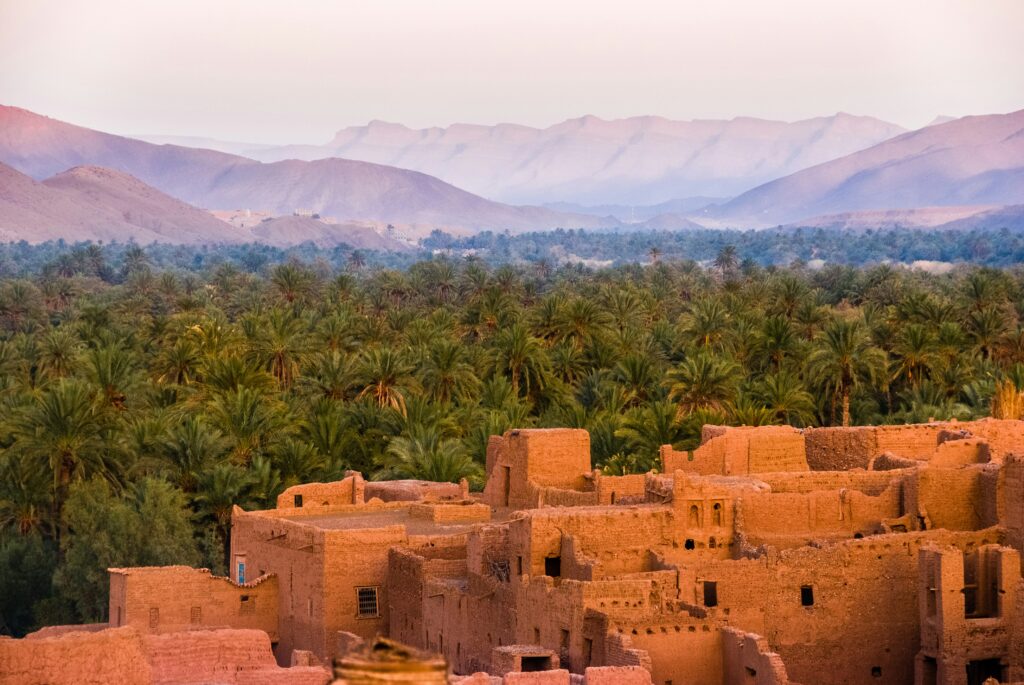
Diverse Terrains and Harsh Climates
Morocco is a land of diverse landscapes, ranging from the rugged Atlas Mountains to the expansive Sahara Desert. The climate varies significantly across regions, with scorching heat in the desert areas and cooler temperatures in the highlands. The harsh and varied geography has made reliable transportation methods crucial for survival and trade.
The Camel: An Overview 🐪
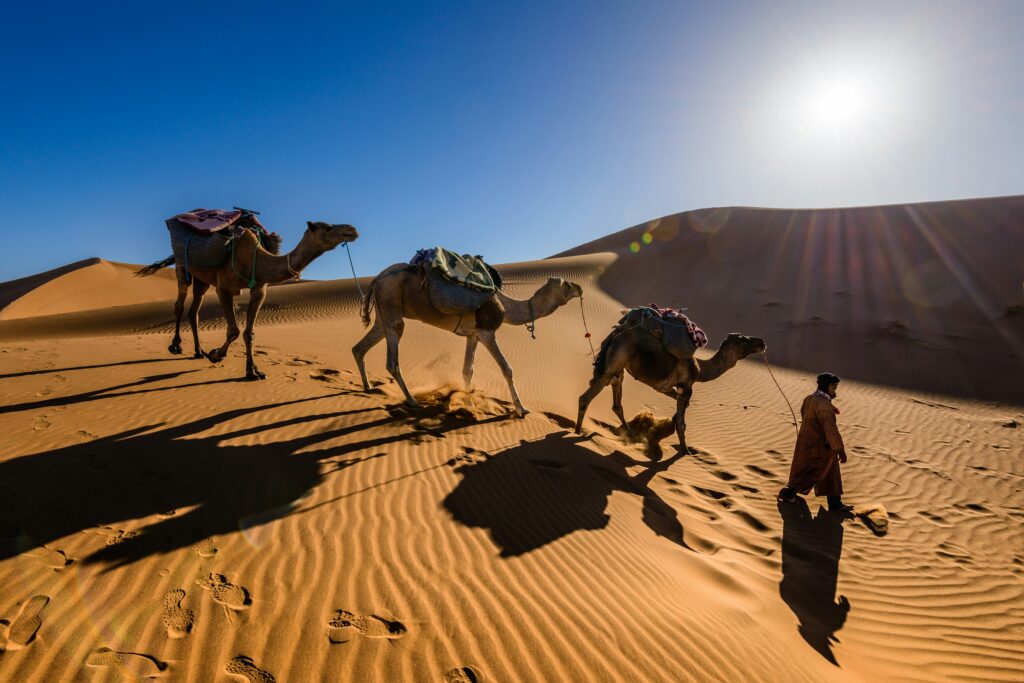
Characteristics and Adaptations
Camels are uniquely suited to desert life. Their physical adaptations, such as humps that store fat, long eyelashes, and thick foot pads, allow them to travel long distances without water and endure extreme temperatures. These traits make camels the perfect companions for navigating Morocco’s challenging environments.
Historical Significance of Camels in Morocco 🏜️
Early Use in Trade and Travel
For centuries, camels have been a cornerstone of Moroccan trade and travel. Their ability to carry heavy loads over long distances made them invaluable for caravans crossing the Sahara Desert. These caravans were essential for trade routes connecting Morocco to other parts of Africa and beyond.
Trade Caravans often comprising hundreds of camels, transported goods such as salt, gold, spices, and textiles. These journeys could take weeks or even months, with camels providing a reliable means of transporting valuable commodities across vast deserts.
Camels in Moroccan Culture and Society 🌟
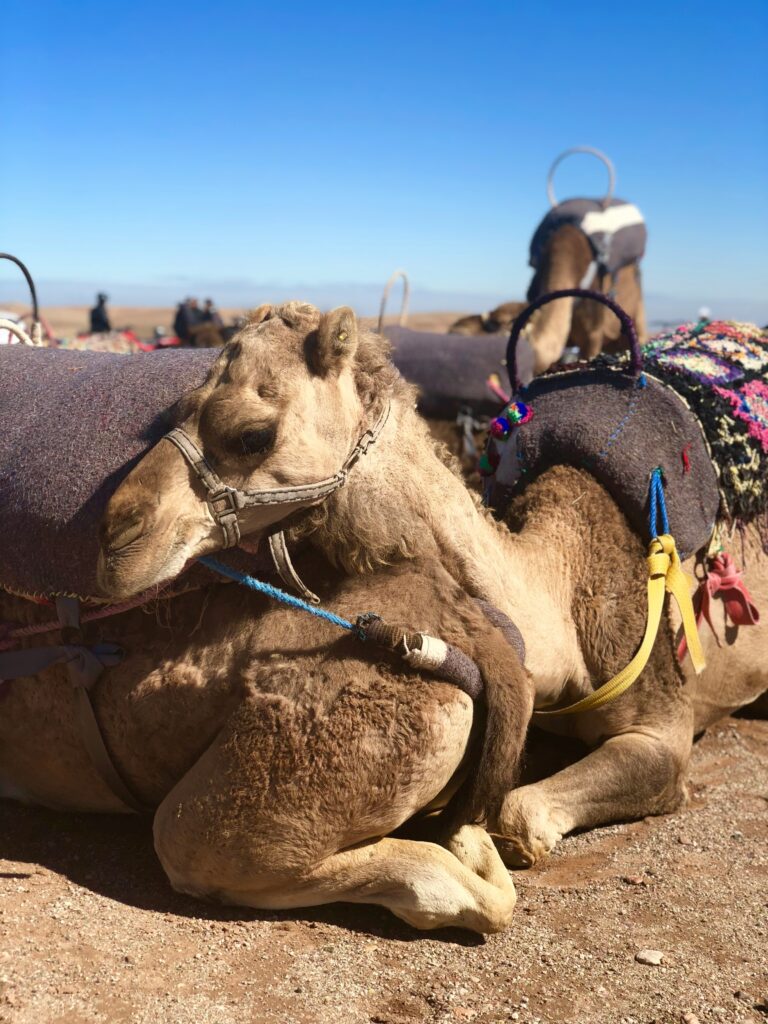
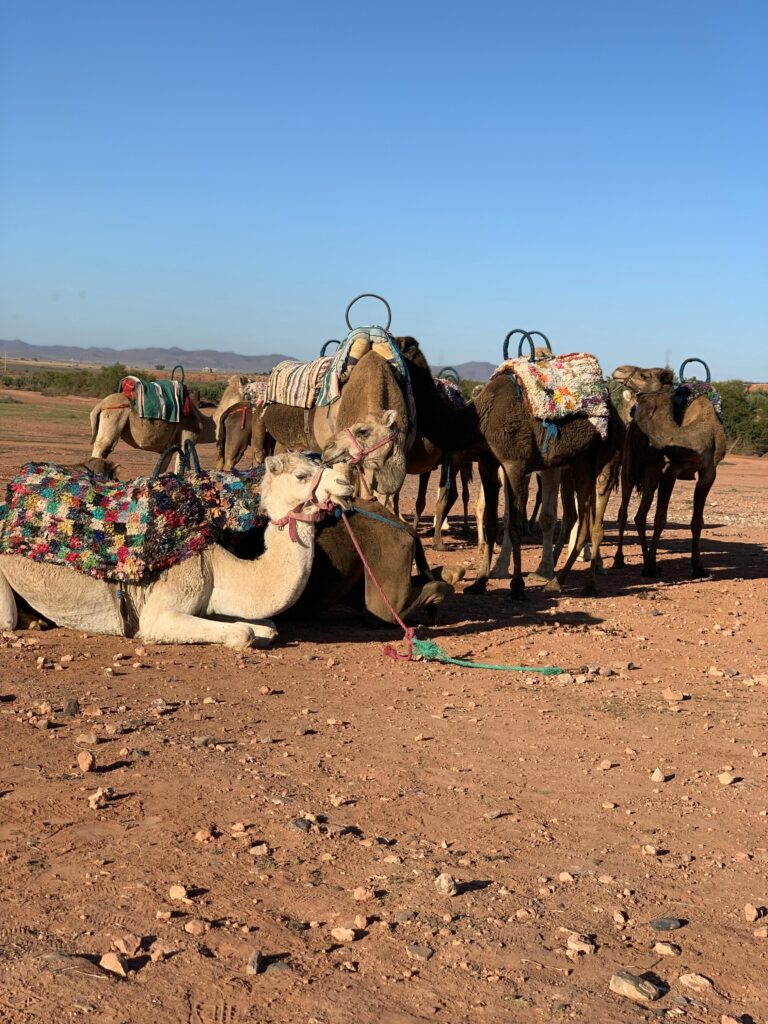
Cultural Symbolism and Festivals
Camels hold a special place in Moroccan culture and traditions. They are typically featured in folklore, music, and festivals, symbolizing endurance and wealth.
Festivals and Celebrations Camels are celebrated in various Moroccan festivals, where they are adorned with colorful decorations and participate in races and parades. These events highlight the cultural importance of camels and their integral role in Moroccan heritage.
The Role of Camels in Modern Morocco 🚶
Continued Use in Rural Areas
While modern transportation methods have largely supplanted camels in urban areas, they remain vital in rural and desert regions. Camels are still used by nomadic tribes and for ecotourism, providing an authentic travel experience for visitors.
Nomadic Tribes in Morocco continue to rely on camels for their traditional way of life. These tribes move with the seasons, using camels to transport their homes and belongings across the desert.
The Camel’s Contribution to Tourism and Economy 💼
Eco-Tourism and Cultural Tours
Camels play a significant role in Morocco’s tourism industry. Camel treks offer tourists a unique way to explore the desert, providing an immersive experience that highlights the natural beauty and cultural heritage of Morocco.
Camel Trekking Tours Camel trekking tours are popular among tourists seeking an authentic desert adventure. These tours often include overnight stays in traditional Berber tents, allowing visitors to experience the nomadic lifestyle and enjoy the tranquility of the desert.
Innovations and Adaptations in Camel Usage 🌐
Modern Applications and Conservation Efforts
In addition to their traditional roles, camels are now part of modern conservation and sustainable tourism initiatives. Efforts to preserve camel populations and their habitats are crucial for maintaining Morocco’s cultural and ecological heritage.
Conservation Projects Various projects aim to protect camels and their natural habitats, ensuring that future generations can continue to benefit from their presence. These efforts include breeding programs, habitat restoration, and eco-friendly tourism practices.
The White Camel Agafay: A Unique Experience to Test Camel Transportation 🐪
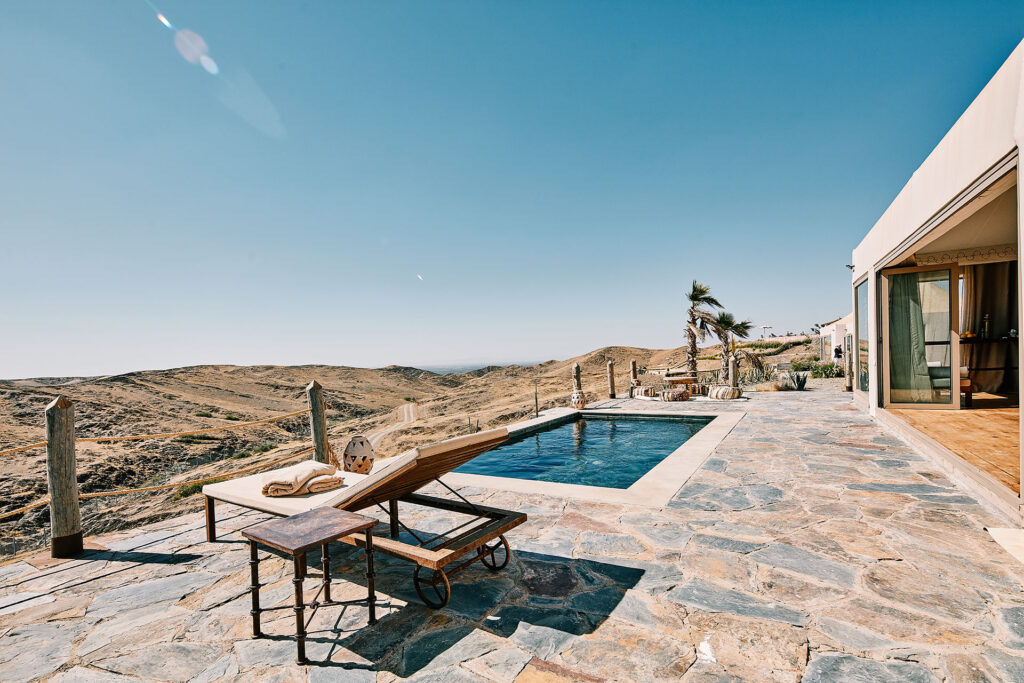
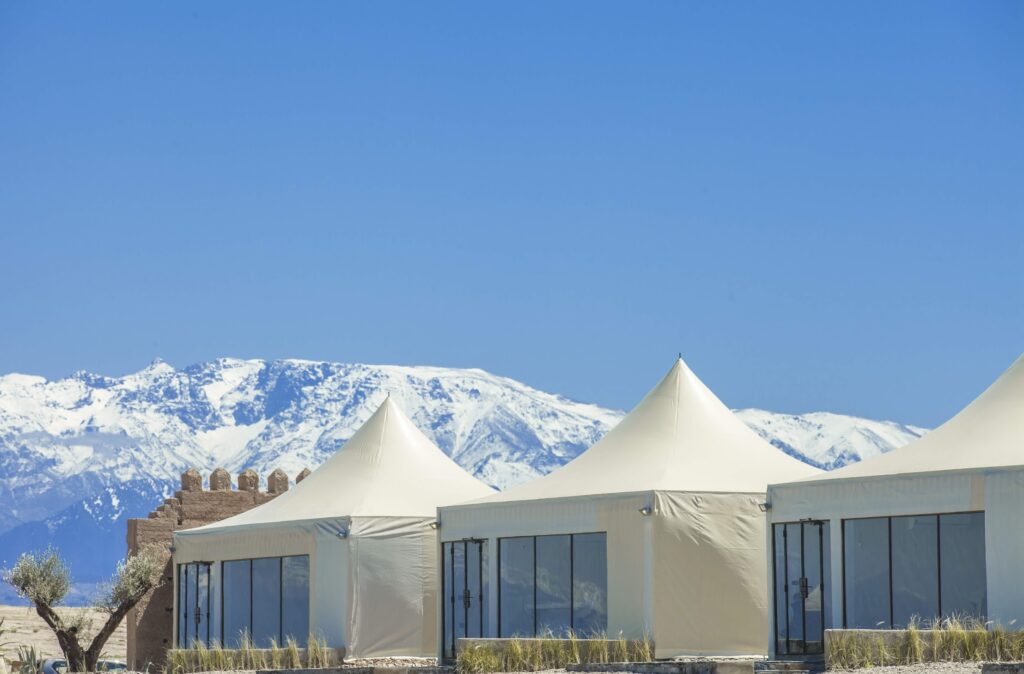
The White Camel Agafay is not just a luxurious desert camp; it is also a gateway to experiencing the traditional modes of transportation that have been integral to Moroccan culture for centuries. Nestled in the Agafay Desert, this camp offers a unique opportunity for visitors to immerse themselves in the rich heritage of camel transportation. Here’s how The White Camel Agafay provides a one-of-a-kind experience to test and appreciate camel travel:
Authentic Camel Trekking Tours
At The White Camel Agafay, camel trekking is more than just a tourist activity; it’s a journey into the past. Visitors are invited to embark on guided camel treks that traverse the stunning landscapes of the Agafay Desert. These treks are designed to mirror the ancient trade routes once traveled by Moroccan caravans. Led by knowledgeable guides, the treks offer insights into the historical significance of camels in Morocco, explaining how they were used for trade, transportation, and daily life.
Immersive Cultural Insights
During the camel treks, guests learn about the vital role camels played in Moroccan society. Guides share stories and historical anecdotes that highlight the camel’s importance in facilitating commerce and cultural exchange across the Sahara. This immersive experience allows visitors to appreciate the camel’s resilience and adaptability, understanding how these remarkable animals enabled the development of trade networks that connected Morocco with other parts of Africa and beyond.
Luxury and Comfort in the Desert
While the camel trekking experience is rooted in tradition, The White Camel Agafay ensures that guests enjoy modern luxury and comfort. The camp’s tented accommodations are designed to offer a serene and opulent retreat after a day of exploration. Each tent features plush beds, en-suite bathrooms, and private terraces with breathtaking views of the desert. This blend of traditional and modern elements provides a unique juxtaposition, allowing guests to step back in time during the day and relax in luxury by night.
Educational and Interactive Experiences
The White Camel Agafay goes beyond simple camel rides by offering educational sessions about camel care and handling. Guests can participate in interactive experiences where they learn how to saddle and care for camels, gaining hands-on insights into the daily life of nomadic herders. This educational aspect adds depth to the experience, making it not just a ride but a comprehensive understanding of camel husbandry and its historical context.
Stunning Desert Scenery
The Agafay Desert’s rocky, lunar-like landscape provides a dramatic backdrop for camel treks. As guests traverse the desert on camelback, they are treated to panoramic views of the Atlas Mountains and the vast, open desert. The serene and untouched beauty of the Agafay Desert creates a sense of adventure and tranquility, enhancing the overall experience of camel transportation.
Personalized Experiences
The White Camel Agafay prides itself on offering personalized experiences tailored to the interests and preferences of its guests. Whether visitors are looking for a short introductory ride or a longer, more in-depth trek, the camp’s staff can customize the itinerary to ensure a memorable and satisfying experience. This flexibility allows guests to fully engage with the history and culture of camel transportation at their own pace.
Conclusion
The historical and cultural significance of camels in Morocco cannot be overstated. From ancient trade caravans to modern eco-tourism, camels have been indispensable to Moroccan society. Their resilience, adaptability, and enduring presence highlight the deep connection between camels and the Moroccan people.
FAQs
How have camels adapted to the desert environment? Camels have several adaptations that make them well-suited to desert life, including humps that store fat, long eyelashes to protect against sand, and thick foot pads for walking on hot sand.
What role did camels play in ancient trade in Morocco? Camels were essential for trade caravans that crossed the Sahara Desert, transporting goods such as salt, gold, spices, and textiles. These caravans connected Morocco to other parts of Africa and facilitated commerce and cultural exchange.
How are camels used in modern Morocco? In modern Morocco, camels are still used by nomadic tribes in rural areas and play a significant role in the tourism industry, particularly for camel trekking tours that offer tourists a unique desert experience.
What cultural significance do camels hold in Morocco? Camels are deeply embedded in Moroccan culture and traditions, symbolizing endurance and wealth. They are featured in festivals, folklore, and music, and are celebrated in various cultural events.
How do camel trekking tours contribute to Morocco’s economy? Camel trekking tours attract tourists from around the world, contributing to Morocco’s tourism industry and economy. These tours provide an authentic desert experience and support local communities and conservation efforts.
What conservation efforts are in place to protect camels in Morocco? Conservation projects in Morocco focus on protecting camels and their habitats through breeding programs, habitat restoration, and eco-friendly tourism practices, ensuring the preservation of camels for future generations.


